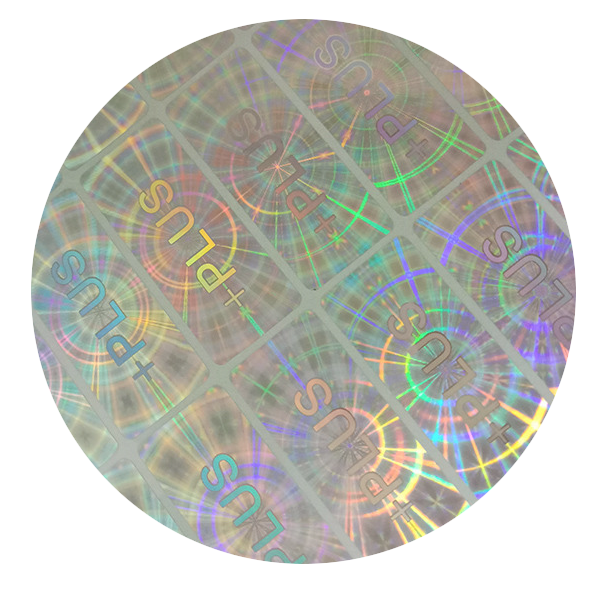
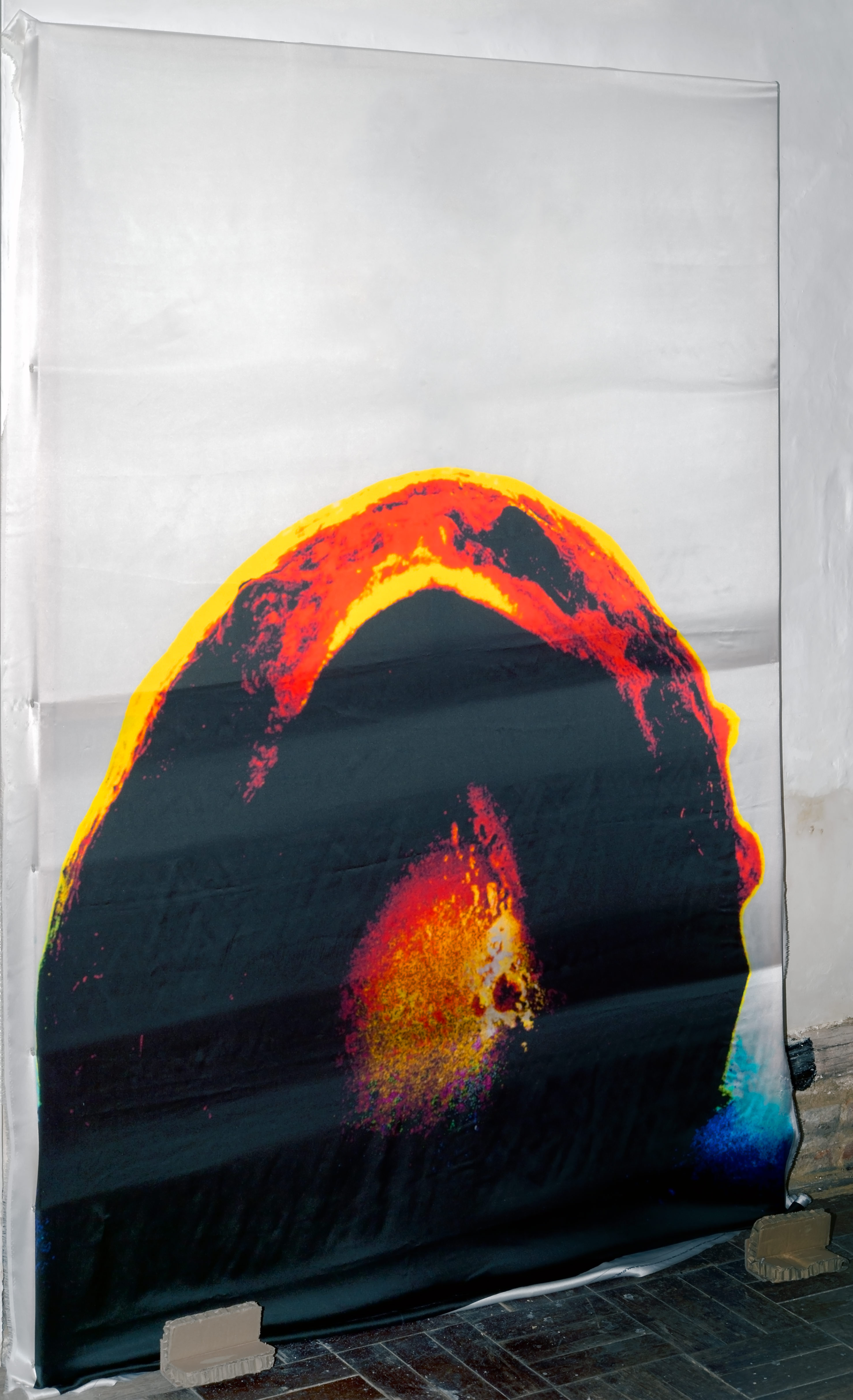
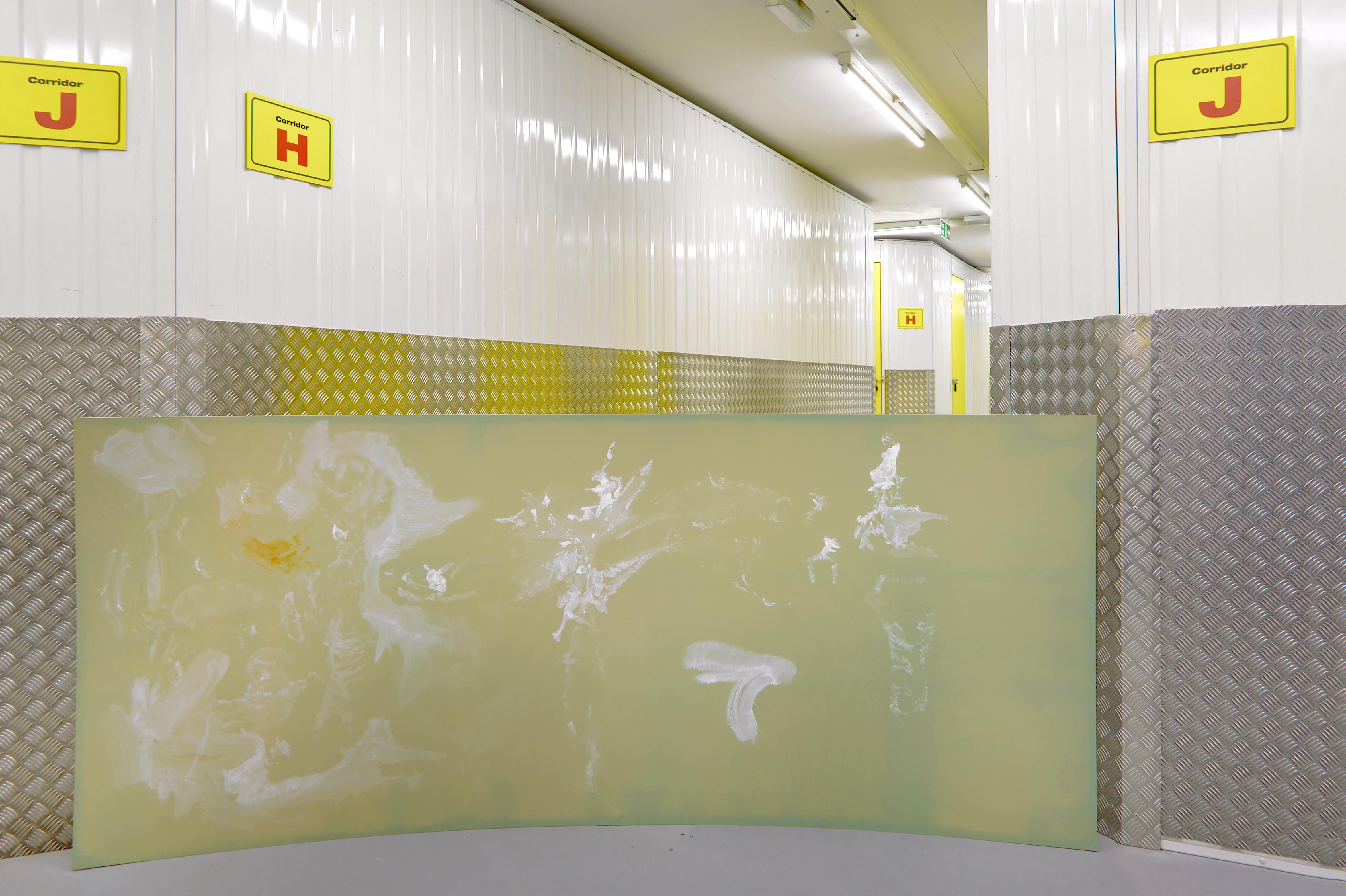



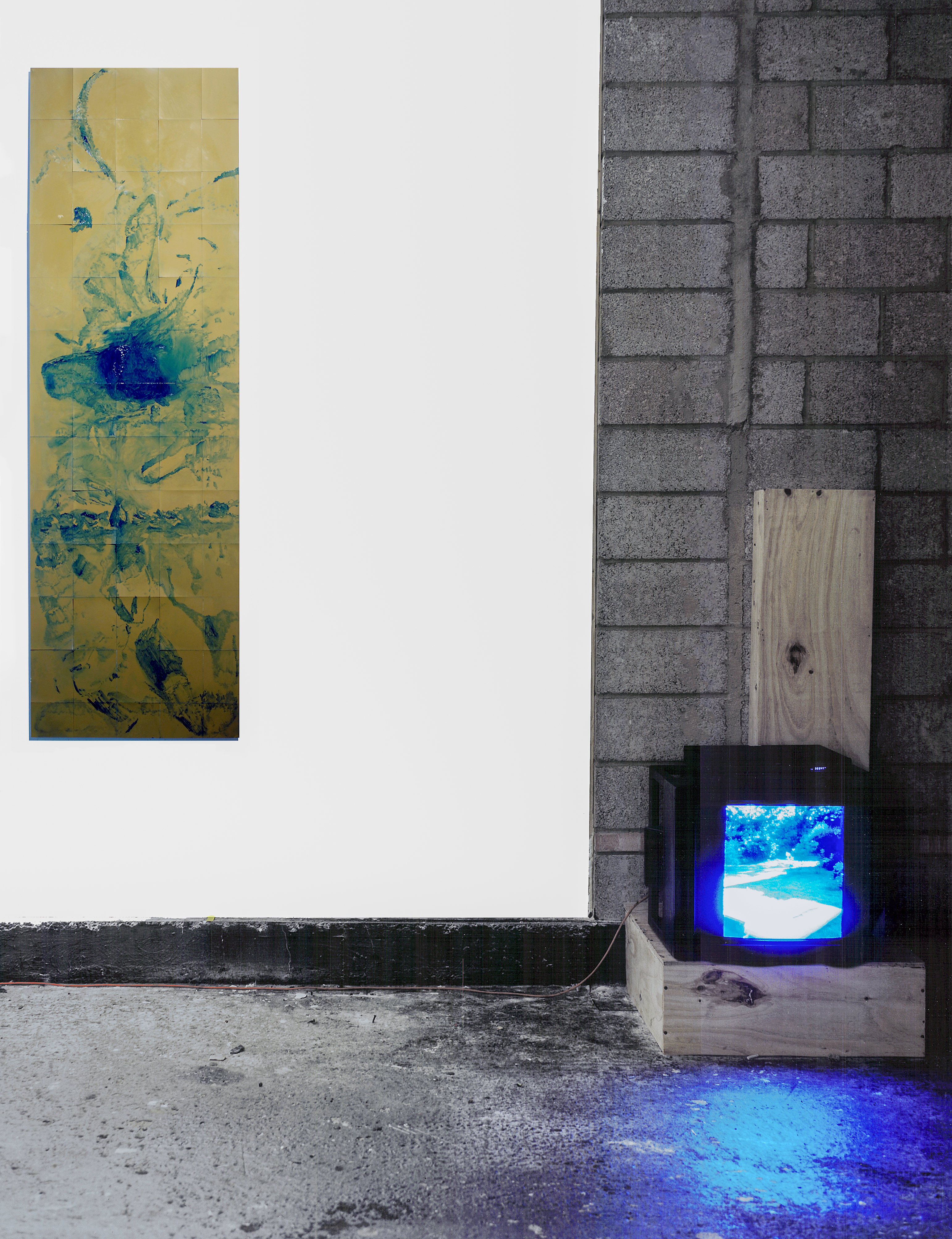
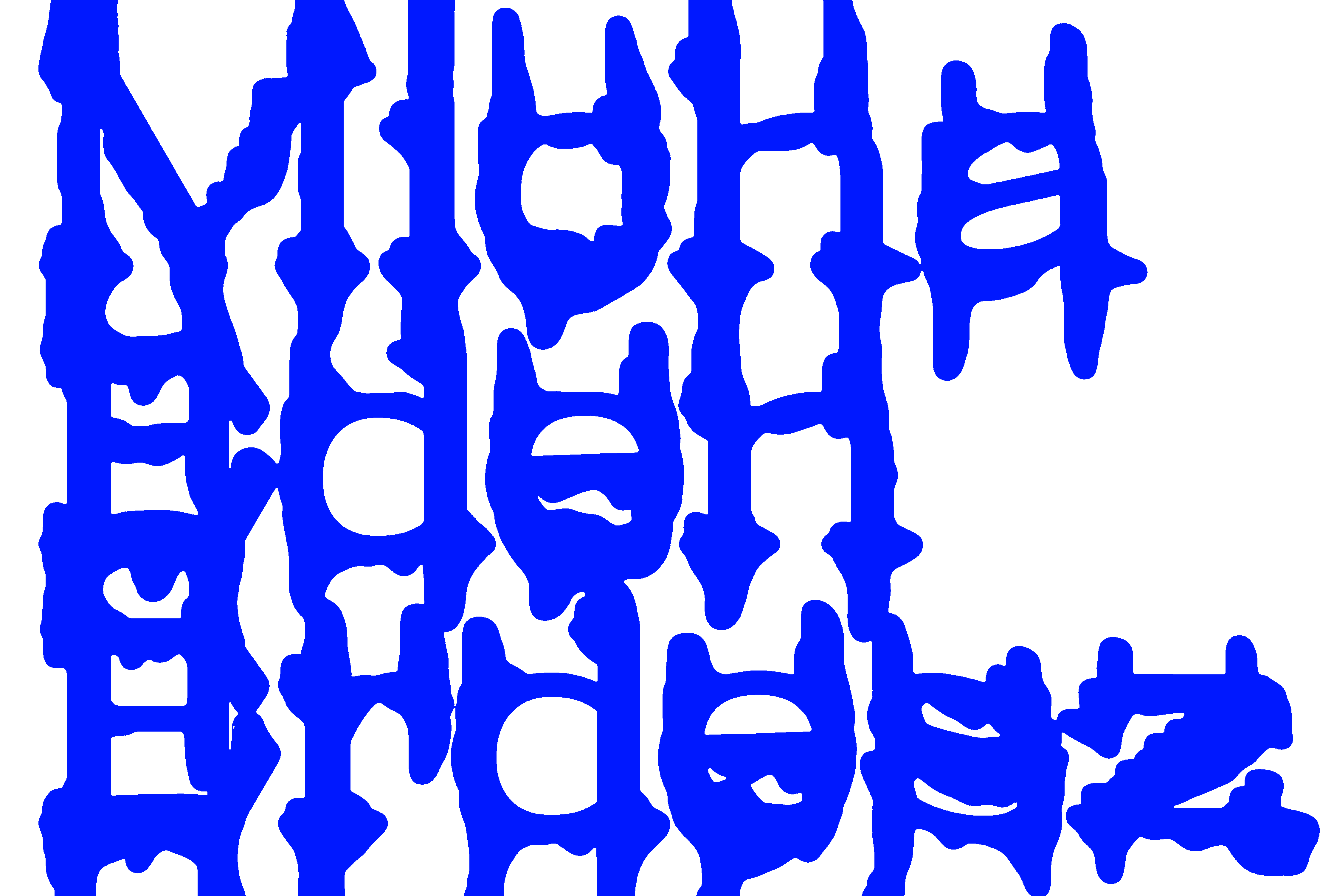
INTERMEDIA
IMAGE
COLLABORATIONS
PAPER
CURATORIAL
CV
CONTACT
TOP
Micha Eden Erdész - Canadian-born Intermedia artist living and working in Hythe, Essex UK.
The Darkride, vertical rides: fairground vernacular - the ravine. A singular cymbal remains in the same spot on the floor behind the bottom of the stairs; the massive weight of an underfloor safe door remains always open and always empty. This is a fragment of the suburban visions of Toronto of my childhood. The carpeted basement of a Downsview split-level house with a blue door: a redundant home bar, partially stocked by random liquors, and beverages. Adorning the edge of a netherland of actual and imagined places, infected by altered consciousness(es), mutability, and disappearance, I am guided by a desire to traverse interior and exterior worlds, as much as diverse media. Engaging with Intermedia creation for me is a kind of contemporary-medieval anchorite technology. It points to a subaltern layer of knowledge; some which may or may not be culture. - Micha Eden Erdész
Micha Eden Erdész, an Intermedia artist who studied architecture and philosophy, edifies his artistic strategy with the help of the large photographic tableau, ‘The Happy Games’, that recreates, using his own materials and methods, the ‘Olympic tent roof’ of the stadium in Munich that was designed and created by Günter Behnisch and Frei Otto (1972). During a visit to the Bavarian state capital, he photographed and filmed this incunable of modern architecture and later adapted it and made it alien. Projected onto a Lycra fabric background, individual acrylic glass elements of the roof structure shine in the dazzling sunlight, raindrops fall onto the roof, the pylons cast shadows and the vertical lines of Olympic rings – added in later – structure the tableau. Despite its size, the picture does not appear monumental, but understated, almost intimate – as a representation of a perceived, captured and reflected moment that cannot be repeated. 2021 Saxa loquuntur – the stones speak – is a Latin phrase, the origin of which lies in the dark recesses of history. It can also be found in the Lucas Gospel (19,40), but there – in the German translation by Martin Luther – the stones ‘scream’. In the recent works of Micha Eden Erdész it is not so much the stones that ‘speak’ because of their materiality, rather it is the structures or buildings formed from them – and other materials – that are seen individually and shaped and interpreted through other artistic means. The aim is not to document and preserve through these works, but rather to question and reflect on their perception of the architecture both natural and built. For the artist, ‘the strange in the everyday’ is the subject of their painted, drawn, photographed and staged works. Or, as Duane Hanson once put it, ‘just that fixed moment.’ Objects, buildings and urban landscapes apparently do not seem to participate in a symbolic dimension, albeit a very a mediated one. On closer inspection, the question arises as to why their works speak to us and what they tell us, and indeed whether they tell us anything at all. Erdész, an artist of Canadian origin, also links the 1972 Summer Olympics with a tragic event: the attack on Israeli athletes. Members of the Canadian water polo team – naive and unaware of what was happening – had helped the terrorists to scale the fence that enclosed the Olympic village. Some of the Canadian athletes, completely shocked and taken aback by the acts of terrorism that followed, felt they had been complicit and left the games. Erdész’s tableau is infused with this story, so to speak, but he does not bring it to the surface. The artist said he did not want to create a ‘memorial’ but attempted to deal with the quandary by aesthetic means. - Andreas Kühne
The Darkride, vertical rides: fairground vernacular - the ravine. A singular cymbal remains in the same spot on the floor behind the bottom of the stairs; the massive weight of an underfloor safe door remains always open and always empty. This is a fragment of the suburban visions of Toronto of my childhood. The carpeted basement of a Downsview split-level house with a blue door: a redundant home bar, partially stocked by random liquors, and beverages. Adorning the edge of a netherland of actual and imagined places, infected by altered consciousness(es), mutability, and disappearance, I am guided by a desire to traverse interior and exterior worlds, as much as diverse media. Engaging with Intermedia creation for me is a kind of contemporary-medieval anchorite technology. It points to a subaltern layer of knowledge; some which may or may not be culture. - Micha Eden Erdész
Micha Eden Erdész, an Intermedia artist who studied architecture and philosophy, edifies his artistic strategy with the help of the large photographic tableau, ‘The Happy Games’, that recreates, using his own materials and methods, the ‘Olympic tent roof’ of the stadium in Munich that was designed and created by Günter Behnisch and Frei Otto (1972). During a visit to the Bavarian state capital, he photographed and filmed this incunable of modern architecture and later adapted it and made it alien. Projected onto a Lycra fabric background, individual acrylic glass elements of the roof structure shine in the dazzling sunlight, raindrops fall onto the roof, the pylons cast shadows and the vertical lines of Olympic rings – added in later – structure the tableau. Despite its size, the picture does not appear monumental, but understated, almost intimate – as a representation of a perceived, captured and reflected moment that cannot be repeated. 2021 Saxa loquuntur – the stones speak – is a Latin phrase, the origin of which lies in the dark recesses of history. It can also be found in the Lucas Gospel (19,40), but there – in the German translation by Martin Luther – the stones ‘scream’. In the recent works of Micha Eden Erdész it is not so much the stones that ‘speak’ because of their materiality, rather it is the structures or buildings formed from them – and other materials – that are seen individually and shaped and interpreted through other artistic means. The aim is not to document and preserve through these works, but rather to question and reflect on their perception of the architecture both natural and built. For the artist, ‘the strange in the everyday’ is the subject of their painted, drawn, photographed and staged works. Or, as Duane Hanson once put it, ‘just that fixed moment.’ Objects, buildings and urban landscapes apparently do not seem to participate in a symbolic dimension, albeit a very a mediated one. On closer inspection, the question arises as to why their works speak to us and what they tell us, and indeed whether they tell us anything at all. Erdész, an artist of Canadian origin, also links the 1972 Summer Olympics with a tragic event: the attack on Israeli athletes. Members of the Canadian water polo team – naive and unaware of what was happening – had helped the terrorists to scale the fence that enclosed the Olympic village. Some of the Canadian athletes, completely shocked and taken aback by the acts of terrorism that followed, felt they had been complicit and left the games. Erdész’s tableau is infused with this story, so to speak, but he does not bring it to the surface. The artist said he did not want to create a ‘memorial’ but attempted to deal with the quandary by aesthetic means. - Andreas Kühne
Micha Eden Erdész's artistic practice is remarkably diverse. It ranges from artistic research to working in various media such as painting, photography, video and sculpture. The different techniques stand for different ways in which one can deal with a lived reality: through haptic, visual comprehension, through intellectual understanding or even supernatural sensation. In the respective works, he creates new spaces of experience for different aspects of reality. He encodes them in a separate language that seems to be detached from references and thus forms its own language, its own mystery. This in turn invites a viewer to decipher it, offering a wonderful escape into the artist’s imagination. - Angela Stauber
All images licensed under Creative Commons BY-NC-ND 4.0
